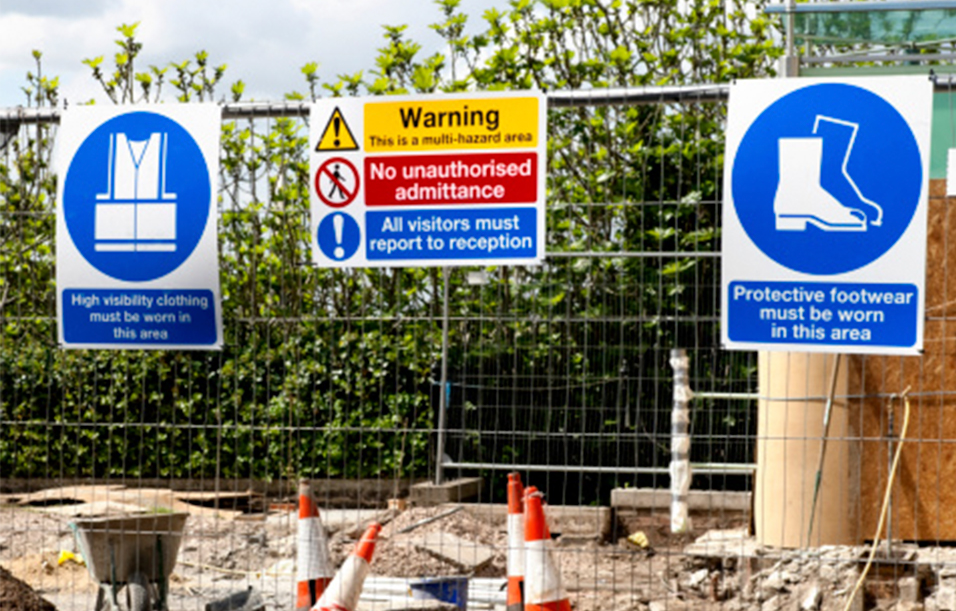Job site safety is paramount to the precast concrete industry and the foundation of employee well-being. For plant managers and safety personnel involved in the construction of parking garages, bridges, university buildings, and beyond, fostering a robust safety culture is not just a responsibility—it’s a strategic imperative. A work environment where safety is prioritized ensures the longevity of operations and the health of every team member.
The precast concrete industry is continually evolving, adopting innovative materials, advanced techniques, and stringent precautions to protect workers from hazardous conditions and minimize the risks associated with high-stakes tasks. This proactive approach is crucial for optimizing safety on construction sites and effectively adapting to the moving demands of complex projects.
Explore how the precast concrete industry effectively addresses job site safety, navigating both longstanding challenges and emerging risks to ensure a safer future for all.
What is General Construction Site Safety?
Construction is widely recognized as one of the most hazardous industries, with job sites often filled with dangerous materials and potential risks. According to the Occupational Safety and Health Administration (OSHA), one in ten construction workers is injured each year, and there are, on average, more than 100 fatalities on the job each week. The primary causes of these fatalities include falls, being struck by objects, electrocution, and incidents where workers are caught in or between hazards. Meticulous attention must be given to these dangers—along with careful consideration of logistics, equipment, coordination, and connections—to secure job site safety and ensure projects are completed without compromising the workforce’s well-being. Some several critical construction site safety measures construction zones can implement to mitigate risk in precast production and ensure worker safety are: lockout/tagout (LOTO) procedures, comprehensive signage, energy control programs, & machine guarding.
- Lockout/Tagout (LOTO) Procedures: LOTO procedures prevent accidental machine startups during maintenance by isolating and locking energy sources in the “off” position, with a tag identifying the responsible party. In the precast concrete industry, where heavy machinery is common, LOTO is essential to ensure equipment remains deactivated, safeguarding workers and others nearby from potential hazards.
- Comprehensive Signage: Effective signage is crucial for safety at construction sites, providing hazard warnings, operational instructions, and emergency directions. Clear visual cues like color coding and symbols ensure quick understanding, even for those not fluent in the local language, enhancing overall job site safety.
- Energy Control Programs: Energy control programs manage all energy sources in a production environment, extending beyond LOTO to include electrical, hydraulic, pneumatic, and thermal energy protocols. These programs ensure equipment is fully de-energized and cannot be reactivated until maintenance is complete, minimizing risk to job site safety.
- Machine Guarding: Machine guarding involves installing physical barriers and protective devices on machinery to prevent contact with dangerous components. In the precast concrete industry, properly guarding equipment for mixing and cutting is vital to protect workers from severe injuries and maintain operational efficiency.
Precast concrete arrives ready for assembly, reducing the number of workers needed and minimizing on-site risks. This can effectively eliminate the need for additional job site safety measures. Once installed, precast concrete’s inherent durability offers robust protection against destructive hazards like storms, fires, earthquakes, and blasts. From start to finish, precast concrete provides superior safety compared to other materials.
What are Common Job Site Safety Risks?
Despite the advanced safety measures in place, certain risks are inherent to construction sites. Understanding these risks is crucial for developing effective strategies to mitigate them. Some of the most common job site safety risks include: falls, caught-on or in-betweens, strikes, & electrocutions.
- Falls: Falls are the leading cause of fatalities in construction. The risk of falling is ever-present, whether from scaffolding, ladders, or unprotected edges. Proper use of fall protection systems, guardrails, and nets, coupled with worker training, can significantly reduce this risk.
- Caught-On or In-Between: Workers can be caught in or between machinery, structures, or materials, leading to severe injuries or fatalities. Clear communication, proper machine guarding, and adherence to safety protocols are essential to prevent such incidents.
- Strikes: Being struck by falling objects, equipment, or moving vehicles is another common risk. Wearing hard hats, securing tools and materials, and establishing exclusion zones can help protect workers from these hazards.
- Electrocutions: Contact with live wires or faulty electrical systems can lead to electrocution. Implementing strict lockout/tagout procedures, using insulated tools, and conducting regular electrical inspections are critical in preventing these incidents.
What are some Unique Precast Concrete Construction Safety Precautions?
Working with precast concrete requires specific safety precautions beyond general construction site safety. Given the weight and rigidity of precast elements, even minor mishaps can result in serious injuries or structural damage. Some vital precautions to ensure precast concrete construction safety include: wearing PPE, using proper tools and equipment, using proper techniques and communication, and having handwashing stations available.
- Wear Proper Personal Protective Equipment (PPE): PPE is essential when working with precast concrete. Workers should always wear hard hats, steel-toed boots, gloves, safety glasses, and high-visibility clothing to protect against potential hazards. PPE should be regularly inspected and replaced as necessary to ensure maximum protection.
- Use Proper Tools & Equipment: Handling precast concrete requires specialized equipment, such as cranes, hoists, and rigging gear. It’s crucial to ensure that all equipment is adequately maintained and operated by trained personnel. Using the right tools for each task reduces the risk of accidents and enhances overall efficiency.
- Employ Proper Techniques & Communication: Proper lifting techniques and clear communication among team members are crucial when maneuvering heavy precast elements. Workers should be trained in safe handling practices and use hand signals or radios to communicate effectively during lifts. This coordination minimizes the risk of dropped loads or other mishaps.
- Have Washing Stations Available: Working with concrete can expose workers to harmful substances like cement dust, which can cause skin irritation or respiratory issues. Having washing stations readily available allows workers to clean off any hazardous materials immediately, reducing the risk of long-term health effects.
By adhering to these practices and protocols, the precast concrete industry can continuously improve safety at construction sites, ensuring the well-being of its workforce while delivering high-quality, durable structures.
Defending Against Illnesses
In the wake of the COVID-19 pandemic, the importance of health and safety protocols has never been more evident across all industries, including precast concrete. While the immediate threat of COVID-19 has lessened, the lessons learned from the pandemic have reshaped how companies approach virus prevention and general health management on job sites.
For the precast concrete industry, where physical presence is unavoidable, maintaining a healthy workforce is critical. This involves implementing strategies beyond basic illness prevention and addressing broader health concerns. Companies now recognize that a healthier workforce leads to fewer disruptions, increased productivity, and improved morale. To maintain a healthy workforce, it’s crucial to integrate the following measures into job site safety protocols:
- Health Monitoring: Regular health screenings and easy access to healthcare services help detect and manage illnesses early, preventing their spread. Encourage workers to stay home when unwell without fear of losing income.
- Hygiene Practices: Reinforce hand hygiene and respiratory etiquette by providing ample handwashing stations and hand sanitizers, reducing the spread of common illnesses.
- Ventilation: Maintain proper ventilation and air quality in indoor workspaces to reduce the risk of airborne illnesses.
- Flexible Scheduling: While strict social distancing may not be necessary, minimizing crowding and allowing flexible schedules can help prevent illness spread.
- Ongoing Training: Regularly educate workers on health and safety practices to ensure everyone can protect themselves and others.
With its inherent advantages, the precast concrete industry is well-positioned to continue operating safely in this new landscape. Precast panels, cast in controlled environments, require fewer workers on-site, reducing the risk of illness transmission. Additionally, the efficiency of precast construction—where pieces arrive ready for quick assembly—minimizes the time workers spend on-site, further lowering health risks.
J. Seroky, PCI Chairman and President of High Concrete Group, emphasizes that safety considerations are increasingly shaping construction decision-making. He urges project owners, designers, and architects to educate themselves on job site safety benefits “before they start making material decisions for their next big projects.” Many overlook the advantages of precast concrete, which Seroky describes as a “beautiful, durable solution that requires fewer people on-site, shortens delivery timelines, and leads to a lower risk of injury claims and OSHA violations.”
Taking Personal Precautions
Complete job site safety hinges on the commitment of every worker to remain vigilant and accountable, ensuring both their own safety and the well-being of their colleagues. While management plays a crucial role in assessing workspaces, providing regular training, and inspecting equipment, individual workers must also take proactive steps. This includes using proper techniques, thoroughly inspecting equipment before each use, and keeping work areas clean and organized.
Personal safety measures range from traditional practices like wearing appropriate footwear and protective gear to newer approaches that address evolving industry standards. For instance, ensuring proper ventilation in confined spaces, using ergonomic tools, and maintaining clear communication on-site are all vital components of construction site safety. By taking these precautions, employees contribute to a culture of safety as they construct and erect precast concrete projects, ultimately ensuring that every task is completed with minimal risk.
More on Job Site Safety & Precast
If you’re interested in deepening your knowledge of construction site safety and the benefits of precast, prestressed concrete, the PCI Mid-Atlantic Solutions Center is an invaluable resource. Explore a wealth of helpful materials, industry insights, and expert guidance. Whether you’re seeking detailed information on precast solutions, looking to establish higher education partnerships, or need support with your next project, PCI-MA is here to help. Get in touch today to discover how they can assist you in achieving your construction goals.





